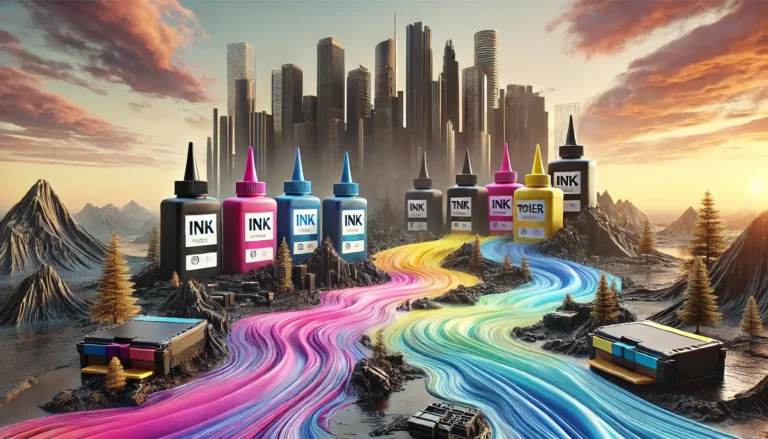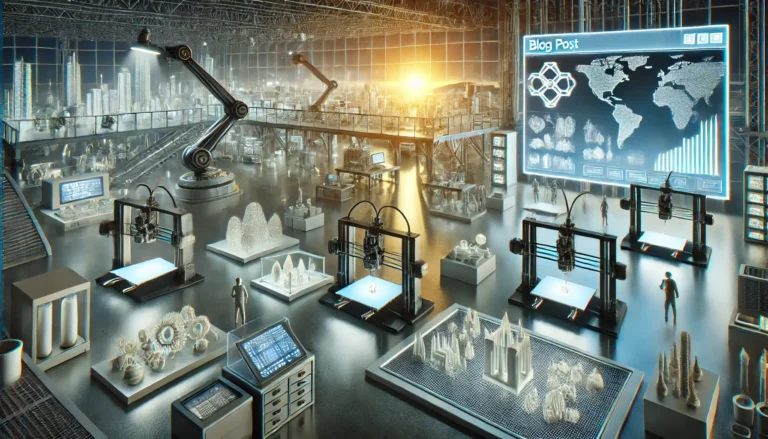With so many new technologies influencing the printing industry, it can be easy to forget just how far printing has come over time. Today we have multifunction printers, Wi-Fi connectivity, and touchscreens. Some printers have even started to incorporate technologies like Near-Field Communications (NFC), which allow you to print a document simply by passing a mobile device across a special sensor.
It wasn’t always like this. To appreciate where the industry is now, it’s important to think about where it came from. This article examines some of the most important innovations in the history of the printing industry.
Woodcutting and Johannes Gutenberg
As is often the case, it was a combination of several small innovations that lead to the first development of proper printing technology.
It all started at some point during the second century AD. Though we don’t know the specifics, it is during this period that most believe that Ts’ai Lun invented paper in China. Nine centuries later, China produced another innovation. Pi-Sheng used clay to create type characters. When coated with ink, these type characters could print onto a piece of paper.
However, the softness of clay limited the effectiveness of the innovation. As paper finally reached Europe, so too did new type character production techniques. The process of woodcutting became popular.
With woodcutting, the type characters are carved into a block of wood. You then apply ink and press the wooden block against a piece of paper, which creates a print of the characters carved into the wood. This provided a stronger and more durable solution than clay, but it was still inefficient. Moreover, wood had a habit of splitting with repeated use, so it still didn’t last long enough for extended printing. Over time, print masters moved onto metal molds, lending a greater degree of permanence to their tools.
The 15th century marked a turning point. Historians believe that several people were working with the idea of creating movable metal type. But it was Johannes Gutenberg who created the very first printing press.
Gutenberg created a special metal alloy containing antimony, lead, and tin. This metal had a low melting temperature, retained dyes and inks, and had the durability needed for extensive use.
He used this metal alloy to create small blocks, each of which contained a character. His printing press allowed him to arrange these blocks in whatever order was needed. As a result, it opened the door for using the same blocks to print different books.
Gutenberg tested his device with the creation of 200 special Bibles, of which about 50 survive to this day. Though he attempted to keep his technology a secret, it spread rapidly throughout Europe. Historians believe that as many as 2,500 cities in Europe had access to some variation of his printing press by the time 1500 rolled around.
The influence of Gutenberg’s work cannot be overstated. His printing press allowed for faster creation of books and pamphlets. Moreover, it was flexible enough for use with more than one book, allowing for the creation of an infinite number of variations of text. It’s likely that Gutenberg’s innovation, and the subsequent adoption of the printing press, led to greater levels of education and literacy throughout Europe.
Several other innovations followed. Aldus Manutius figured out how to print onto smaller books, while Christophe Plantin worked out a way to create facsimiles, or copies, of previously printed texts. Both Charles Stanhope and Richard March Hoe created innovations that sped up the printing process, while Ottmar Mergenthaler’s Linotype allowed users to type what they wanted directly to print.
In these early technologies, you can see the fundamental of printing existed long before people began using electricity. However, technology marched on into the 19th century and an ever-growing population required even faster methods of printing.
The Xerox 914
Duplication had become particularly important in offices by the 1950s. Devices such as the Photostat and carbon paper served the purpose, but they weren’t efficient enough.
Then along came an American company named Xerox. Now one of the largest printing manufacturers in the world, Xerox created a method of dry photocopying in the 1930s. Chester Carlson created the Xerography technology in 1938, with Xerox making it commercially available in 1949. However, it would take 10 more years, and the introduction of the Xerox 914, to make the technology commonplace in offices.
The technology became so popular that Xerox became a household name. Even today, many in America use the brand name when referring to photocopiers.
The Advent of Electronic Printers
As computers became more widely available, companies began looking for ways to print digital documents into a physical format. None of the existing printing methods would do the job, which meant that a new set of innovations would set the stage for the modern printing industry.
The first of these was the dot matrix printer. Invented in 1968, dot matrix printers used a print head, which they run across the page. This head contains an ink-soaked ribbon, which the printer pushes against the paper whenever needed. The use of a dot matrix allowed for more flexibility than typewriters, which meant that these printers could print different fonts and images.
Epson’s EP-101 was the first commercially-available dot matrix printer. It was soon followed by OKI’s Wiredot, which contained serial dot matrixes that allowed for faster printing.
A year later, Xerox struck again with the invention of the laser printer. Based on its xerographic copying technology, the laser printer uses a combination of positive and negative charges to print images. They contain photoreceptor drums, which the printer applies a positive charge to prior to printing. They then use lasers to map out the image on the drum, with every area that the laser touches becoming negatively charged. The printer then applies positively charged ink to the drum, which sticks to the negatively-charged pattern that the laser creates.
IBM created the IBM model 3800, the first commercially-available laser printer, in 1976. This innovation allowed for high-volume printing of mailing labels, invoices, and similarly repetitive documents.
Xerox created its Star 8010 software and printing technology in 1981 for use with personal computers. But it was Hewlett Packard’s LaserJet 8ppm that made the technology affordable in 1984. Many other companies followed this example and Laser printers, alongside inkjet printers using the dot matrix technology, became widely available during the late 1980s and early 1990s.
The Modern Day
Today, advancements in technology have made laser and inkjet printers much more efficient. It’s now possible to find home printers that can print over 60 pages per minute, while industrial printers can handle millions of prints per month.
Other technologies have taken the printing industry even further. 3D printing is an excellent example. This technology allows the user to create 3D models using physical materials and a digital design. Though predominantly used for prototyping, many speculate that 3D printing will become vital to the manufacturing industries as the technology becomes more efficient and cost-effective.
The Final Word
The printing industry has come a long way since Johanne Gutenberg’s printing press. Even today, companies incorporate new technologies, such as cloud computing, to make their devices more efficient. They’re also constantly looking for ways to improve the quality of their printers’ output.
The printer that you have at home is the result of these centuries of innovation. To keep it in top working order, you need the right accessories. That’s where we can help. We offer accessories, ink, and toner for the world’s leading printer brands, so check out our catalog to find what you need today.


